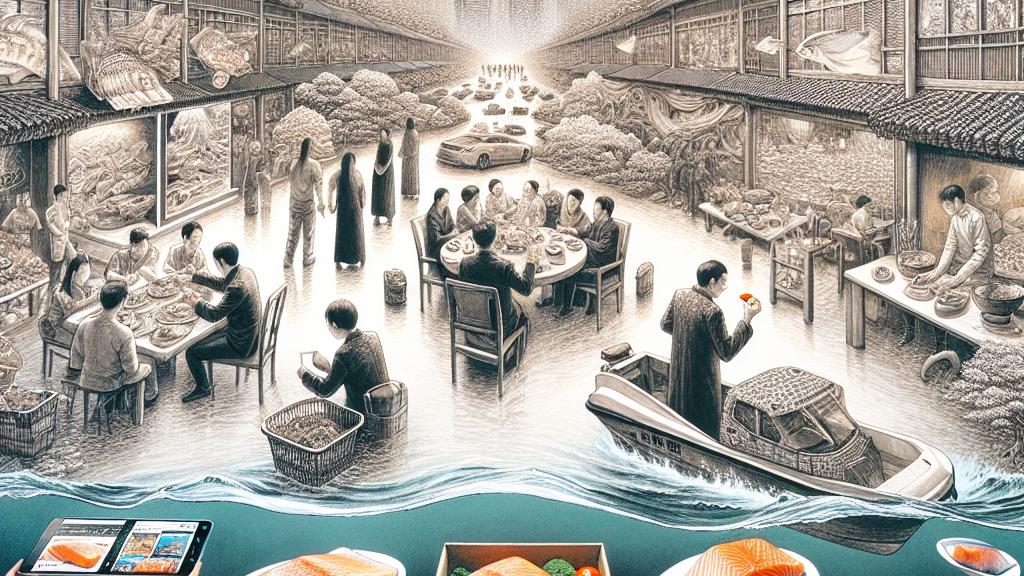Exploring the Rise of Salmon Demand in China and Its Global Impact
Overview
- China's salmon demand surged by an astonishing 46% in 2023.
- E-commerce has profoundly transformed the way Chinese consumers purchase seafood.
- The rapid growth of demand raises significant environmental sustainability concerns.

A Remarkable Surge in Demand
In recent years, China has experienced a remarkable surge in salmon demand, with an astounding 46% increase reported in 2023 alone. This thrilling trend reflects a fundamental shift in dietary habits, with consumers increasingly opting for nutritious and high-quality food. Salmon, once considered a luxury item, has now become a staple for many Chinese households, thanks to its health benefits and culinary versatility. E-commerce platforms have played a pivotal role in this transformation, allowing customers to effortlessly browse and purchase fresh salmon online. Imagine receiving a beautifully packaged fillet right at your doorstep—convenience at its best!
Global Supply Chains in Motion
As China’s enthusiasm for salmon escalates, global suppliers are scrambling to keep up with the booming demand. Countries like Scotland and Norway are facing an exciting challenge, as they optimize their production processes to meet this unprecedented appetite. For instance, Scottish salmon farms have begun integrating advanced aquaculture techniques that not only enhance fish quality but also minimize environmental impacts. Norwegian exporters, on the other hand, are emphasizing sustainability narratives, showcasing their commitment to eco-friendly practices. With each country striving to establish its unique selling points, the race to dominate the Chinese market has sparked innovation and competition like never before.
Environmental Implications of Rapid Growth
Despite the economic benefits this surge brings, it also raises serious environmental concerns. Experts, including Professor Dave Little, stress that the logistics of transporting salmon to China generate significant carbon emissions. Picture hundreds of fishing boats and trucks navigating long-distance routes—each contributing to rising greenhouse gas levels. Moreover, the intensive farming practices needed to satisfy this soaring demand are putting a strain on local ecosystems, leading to worries about overfishing and habitat destruction. Consequently, industry stakeholders must grapple with the critical challenge of balancing profitability with sustainability to ensure the health of our oceans.
Innovative Local Alternatives Emerging
In response to these environmental challenges, China is investing heavily in developing its own salmon farming capabilities. Although roadblocks such as technology and regulation pose challenges, the government has recently permitted the farming of rainbow trout as a viable substitute for salmon. This strategic shift not only promotes local aquaculture but also aims to significantly reduce carbon footprints associated with imports. Surprisingly, taste tests indicate that many consumers find it difficult to distinguish between locally sourced trout and imported salmon. This opens up exciting possibilities for local producers to compete in a market they previously might have thought inaccessible.
Striking a Sustainable Balance for the Future
The rapidly changing Chinese seafood market presents both thrilling opportunities and formidable challenges for global suppliers. It underscores the vital need for achieving a balance between satisfying consumer cravings for delicious seafood and preserving environmental integrity. To secure a sustainable future, industry leaders must invest in innovative aquaculture practices that emphasize resource conservation. By finding this equilibrium, we can not only continue to delight consumers with high-quality salmon but also protect the oceans that provide this precious resource—ensuring that both fish and fishermen thrive for generations to come.

Loading...